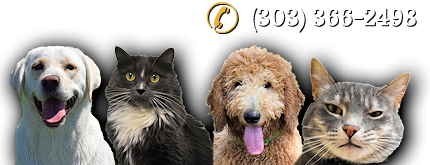Cats are masters of communication, but they don’t express themselves in the same way humans do. If you’re a cat owner, understanding feline body language is key to building a strong bond with your pet. It can also help you recognize when your cat is happy, anxious, or in need of attention. Let’s take a look at some common feline body language signals and decode their meaning.
-
The Tail Twitch
A cat’s tail is like a barometer of their emotions. A gently twitching tail often signifies curiosity or excitement. However, if the tail starts thrashing, it might indicate agitation or anger. A puffed-up tail is a clear sign of a frightened or threatened cat.
-
Purring
While purring is often associated with contentment, cats may also purr when they’re in pain, anxious, or unwell. Observe the context and the rest of your cat’s body language to interpret purring accurately.
-
Kneading
When a cat rhythmically pushes their paws in and out against a soft surface, it’s known as kneading. This behavior is often seen in kittens when nursing. In adult cats, it’s a sign of relaxation and contentment.
-
Slow Blinking
Cats communicate trust and affection through slow blinking. If your cat blinks at you, try blinking back. It’s a way of saying, “I trust you.”
-
Ears Back
If your cat’s ears are flattened backward against their head, it usually signifies fear, anger, or annoyance. It’s a sign that your cat wants to be left alone.
-
Arched Back
When a cat arches their back, they’re typically trying to appear larger and more imposing. This can be a sign of fear or feeling threatened.
-
Hiding
Cats often hide when they’re feeling unwell, stressed, or just need some alone time. Respect your cat’s need for personal space when they choose to hide.
-
Tail Up with Quivering
If your cat approaches you with their tail held high and it’s quivering at the tip, they are excited to see you and probably in a playful mood. This is a sign of a happy and friendly cat.
-
Scratching
Cats scratch to mark their territory and to maintain their claws. Providing a scratching post can help prevent your furniture from becoming a scratching target.
-
Kinked Tail
A kinked tail, like the question mark shape, can indicate a playful and inquisitive mood. If your cat is holding their tail high and it’s curved at the tip, they may be feeling particularly confident and friendly.
-
Flattened Whiskers
When a cat’s whiskers are pulled back flat against their face, they’re usually feeling threatened or anxious. It’s an indication that your cat might be in a situation they’re uncomfortable with.
-
Hissing or Growling
These are clear signs of an agitated or angry cat. It’s essential to give your cat space when they exhibit these behaviors to avoid any confrontations.
-
Puffed-Up Fur
When a cat’s fur stands on end, making them look larger than usual, it’s a sign of extreme fear or feeling threatened. This is often accompanied by hissing or growling.
Understanding your cat’s body language is essential for providing them with the care and attention they need. It’s also crucial for introducing your cat to new situations or environments, like when they stay at a cat boarding facility. Our staff at Doggie Dude Ranch and the O’Cat Corral are well-versed in cat behavior, and we pay close attention to each cat’s cues to ensure their stay is as comfortable and stress-free as possible.
By learning to decode your cat’s body language, you can nurture a stronger, more harmonious relationship with your feline friend and ensure their happiness and well-being. Remember that each cat is unique, and body language can vary from one cat to another. As you spend more time with your cat, you’ll become increasingly attuned to their individual signals. Happy decoding!






